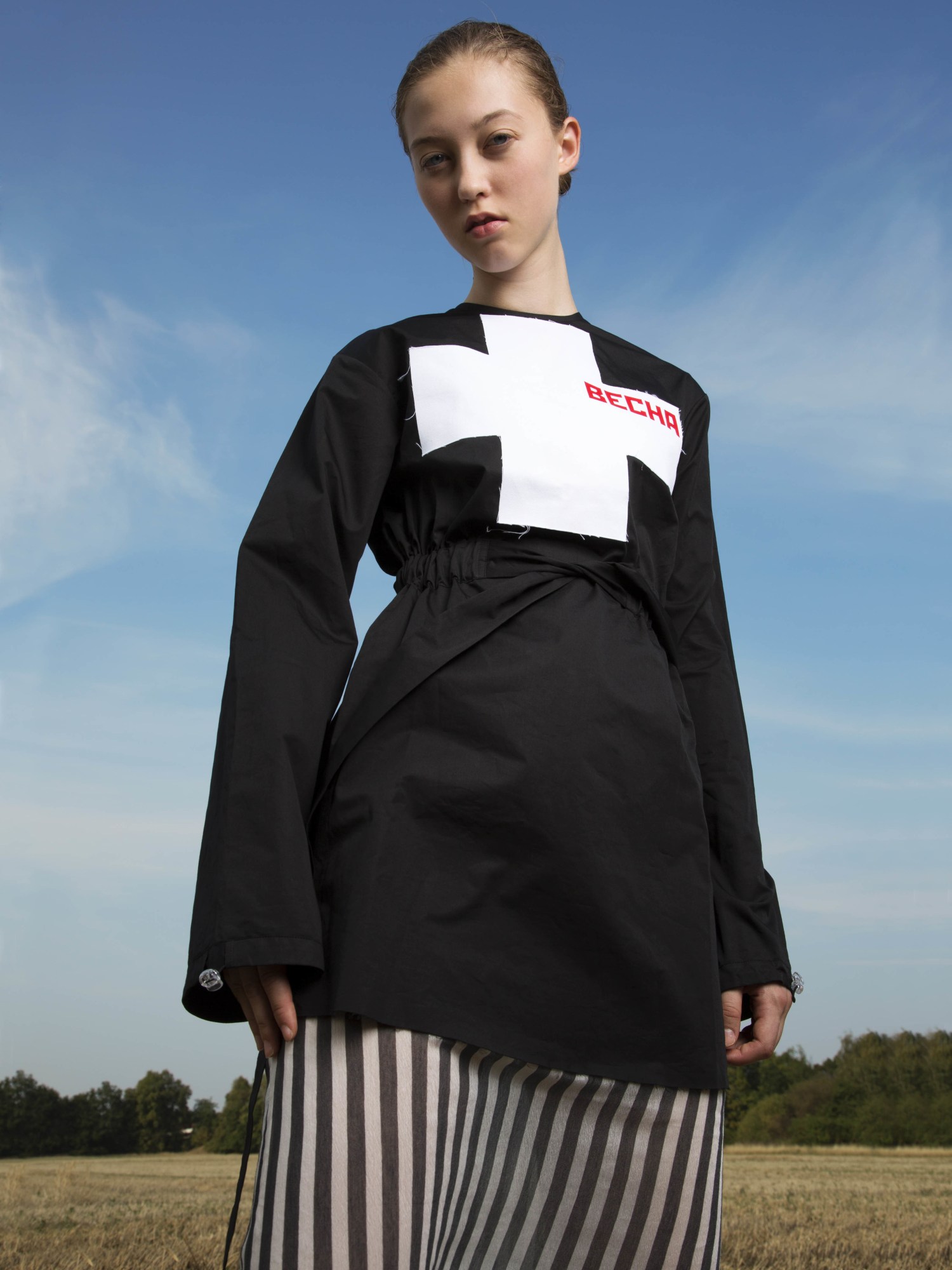Fashion and politics have always been linked; sometimes obliquely, but the best clothes by the best designers always make statements. Sure, sometimes political fashion means discussing Angela Merkel or Hilary Clinton’s wardrobes, or reductive deliberations on economic activity and the length of hemlines. But for young Ukranian designer Yulia Yefimtchuk, fashion and politics have become inescapably entwined.
Yefimtchuk lives and works in Kiev, Ukraine’s capital. She finished her degree in fashion at the State University of Decorative and Applied Art and Design in Kiev in 2009. And in 2014, she presented her collection to an international audience as a finalist at the Hyères Festival. She didn’t end up taking home the main prize, but jurors Carol Lim and Humberto Leon summarily created their own prize for her and ordered her collection for their store, Opening Ceremony. And that — I’ll venture to say — is much more valuable than any already existing honor.
Yefimtchuk’s fashion draws influences from the Russian constructivist movement of the early 20th century, which was representative of the brave new world Russia was entering. The phrase “My God, Help Me Survive This Deadly Love” is daubed across Yefimtchuk’s fall/winter 16 collection — inspired by a famous piece of the graffiti on the Berlin Wall, showing a kiss between USSR premier Leonid Brezhnev and East German leader Erich Honecker.
For her new spring/summer 16 collection, Yefimtchuk adorned pieces with the word “spring” in Cyrillic. The designer took her cues from Michael Kaufman’s film In Spring, which documents the construction of Kiev in 1929, and the city’s awakening. Consequently, her uniform-inspired clothes are enriched by frills, checkered transparent fabrics, flashes of bright color, and suggestive cut-outs. We spoke to Yefimtchuk about her inspirations and the possibilities of political fashion.
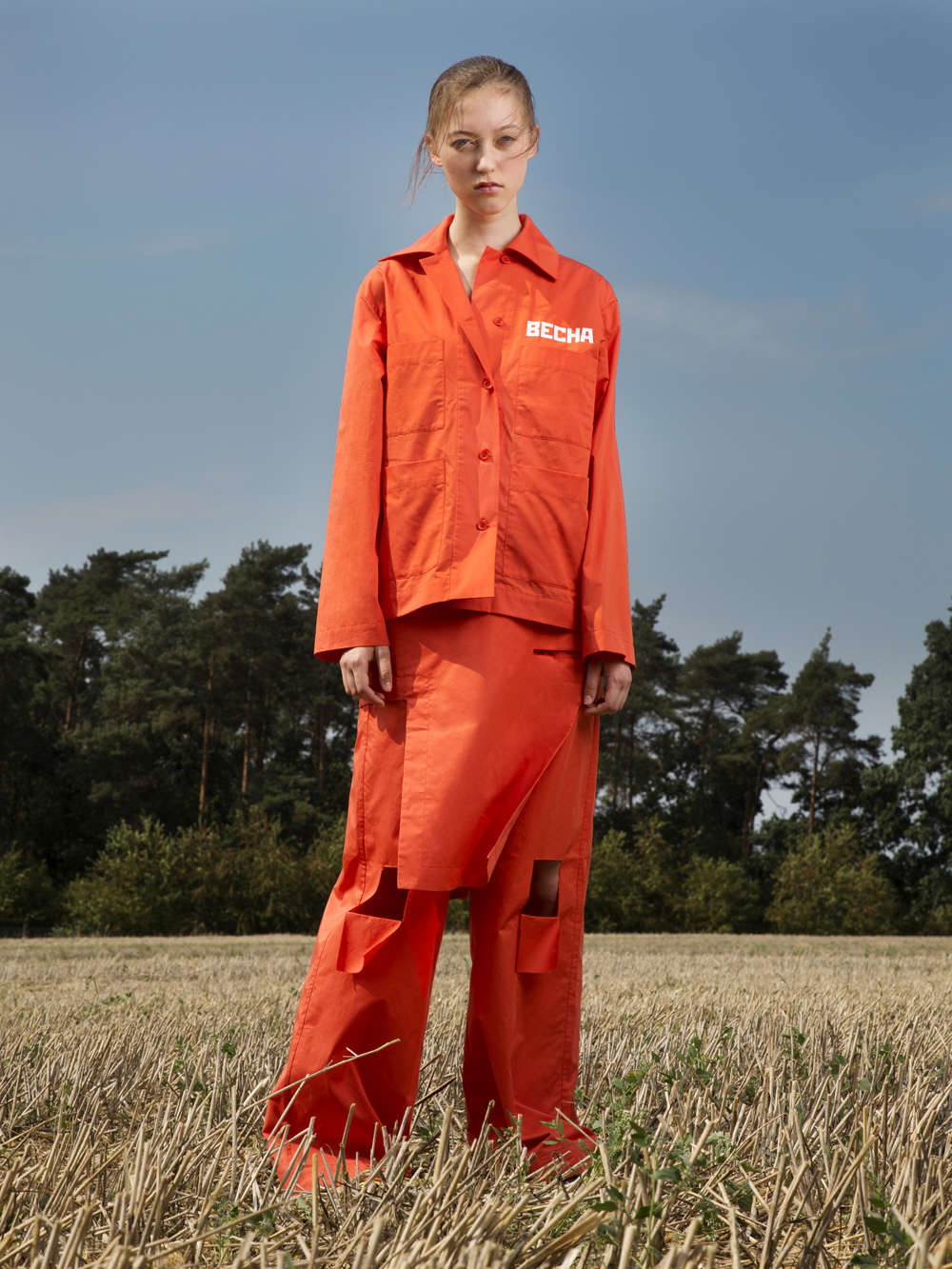
You live and work in the Ukraine. What does the country mean to you?
The political situation in the Ukraine isn’t stable, but there are great people here. My friends and family live here and they’re always willing to support me.
How political can fashion be?
Politics is everywhere. Even love is political, and fashion and art are always political. Fashion is connected to politics because politics impacts the systems we live within.
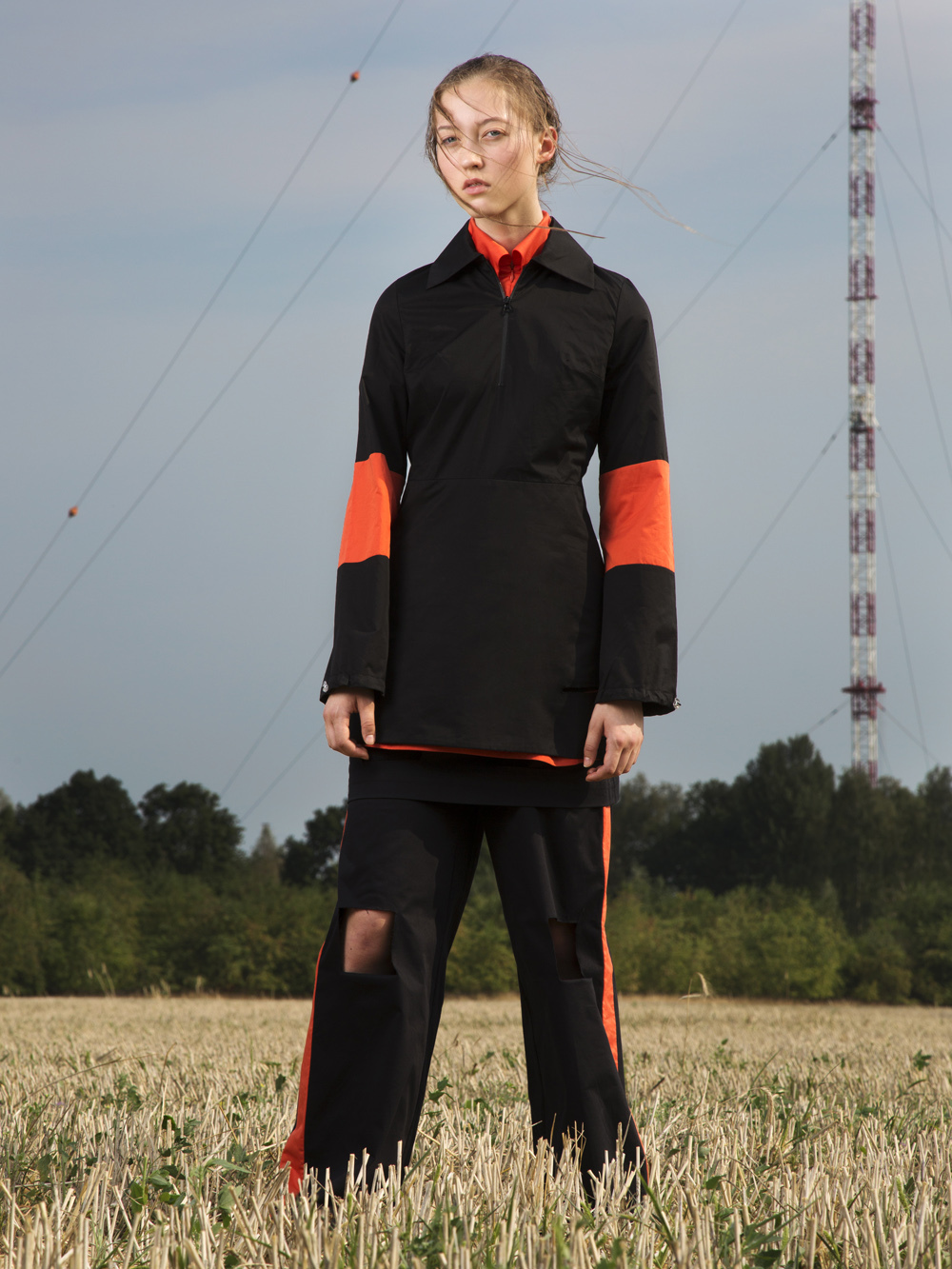

Fashion likes to draw political inspiration from current events. How can how do you transform these into something beautiful, something you want to wear?
History has shown that conflict has often also produced amazing art. Maybe because we have to find light and hope somewhere amidst the chaos and misery. When this hopeful light is turned into something artistic, people want to take part in it, to wear it, to read it, or to look at it.
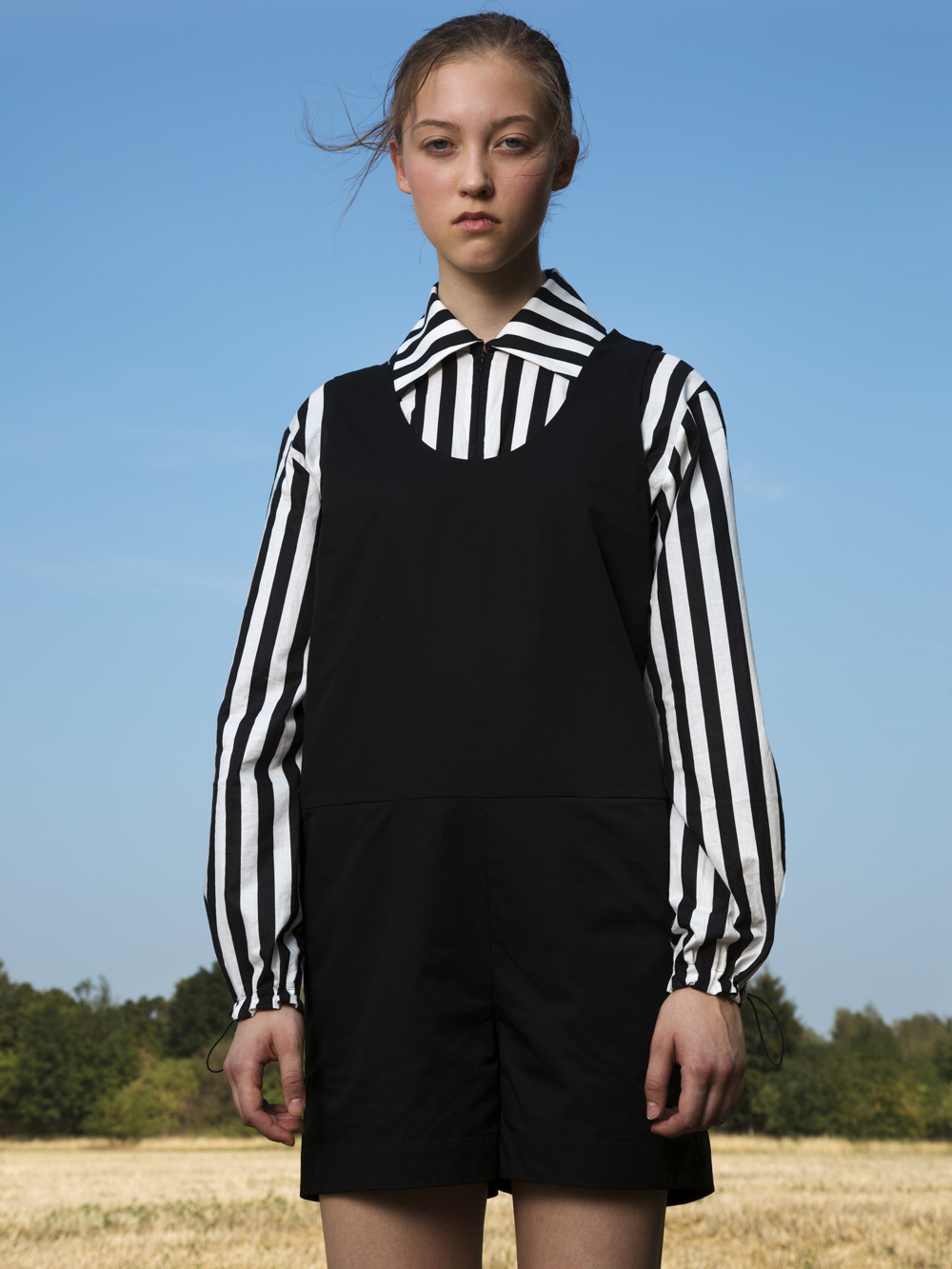
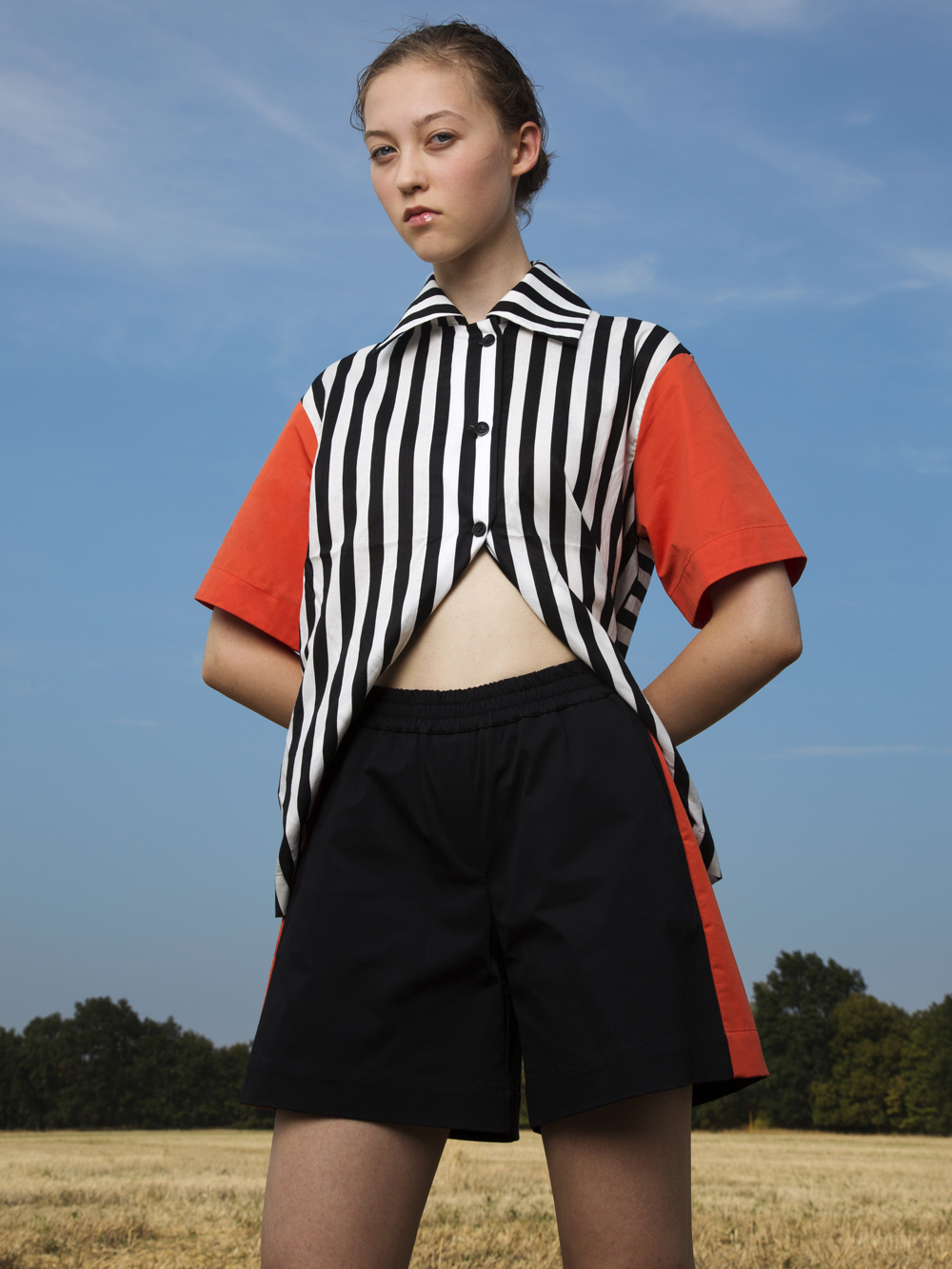
Do your collections have references to this interplay between politics and culture?
You always see the connection between politics and culture in my work, but finding the right way to express this connection in fashion isn’t easy. I often find the answers to my questions in history or in art.
Has the political situation in the Ukraine changed your work and aesthetic recently?
My aesthetic hasn’t changed. But it has influenced the way I work, because the political situation brings instability with it and you have to adjust to that.

Why do use Cyrillic script on your clothing?
Cyrillic prints are my way of talking about current events in the Ukraine. They’re also influenced by my father and his work for the Soviet Union. He was an artist and made Soviet posters with slogans. This aesthetic has always fascinated me, it’s very strong.
Your silhouettes are always very strict, almost combative. What do they say about a woman’s body?
The female body is very sensitive and I want to protect it. I really don’t like the idea of showing sexuality; I think that’s vulgar. I prefer to keep the body’s sexuality hidden, where you can only see it through the burning in a person’s eyes, by the strong silhouette of their clothes. By creating these kinds of clothes, I’m trying to show a woman’s interesting inner world.
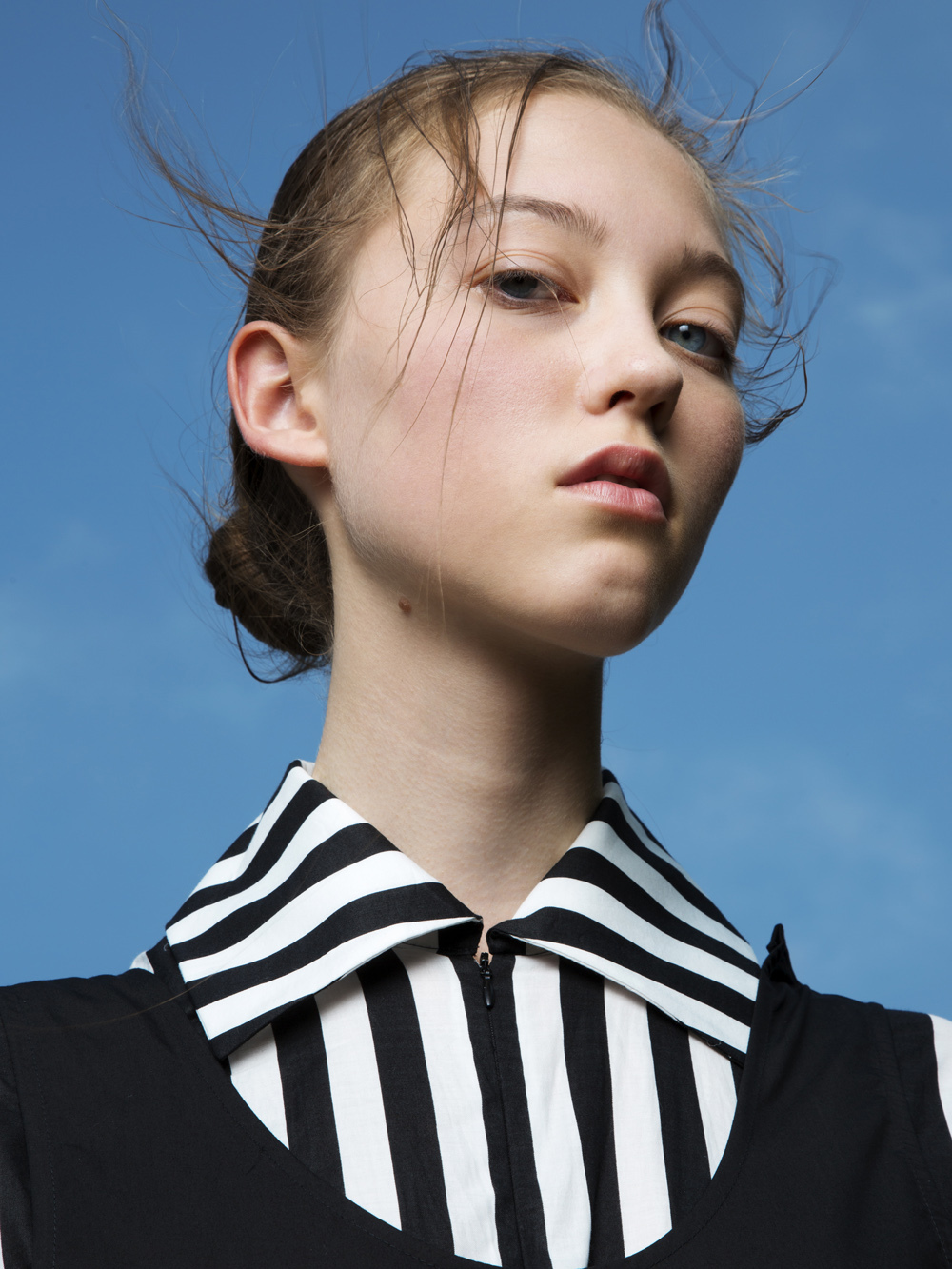
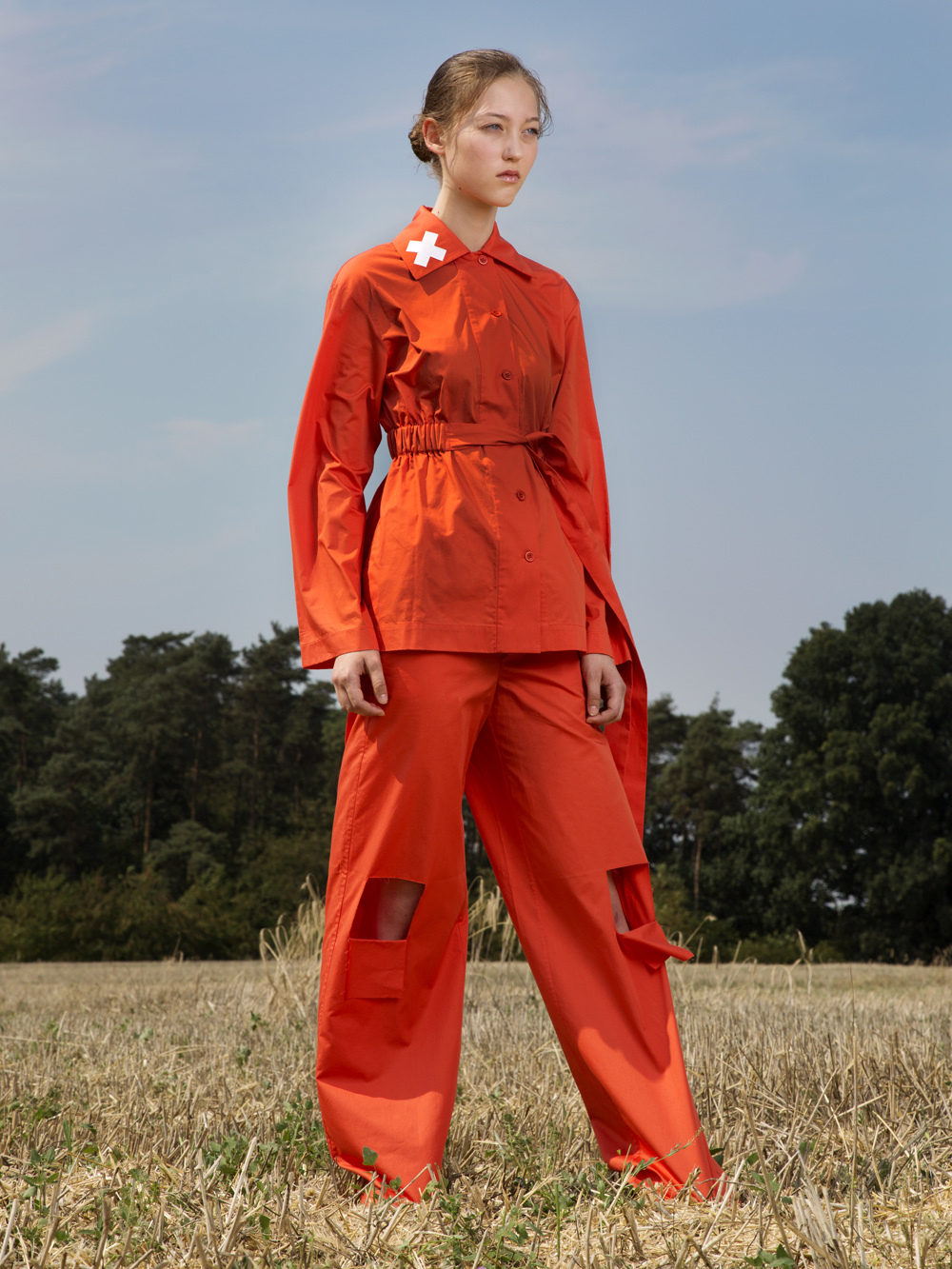
How important are colors for you? You use a lot of red, white, and black in your collections.
On the one hand, the colors stand for the artist Kazimir Malevich, who I admire. Furthermore, these colors represent my roots: red, black, and white are the colors used in traditional Ukrainian clothing. Then I’ve given each of the colors meaning: black stands for work, red for joy, and white stands for peace.
Another Ukrainian designer who works with national costumes is Vita Kin. Her use of it seems to be more traditional, while your fashion seems to be more progressive and even provocative.
For me, national Ukrainian traditions are so subtle that I’m afraid of referencing them. I’m not ready to do that yet. Symbols and colors need to be in harmony. Our forefathers used them to protect themselves and their families. I don’t always agree with what Vita Kin does in all aspects of her art. But everyone is going to do what they want to do. My fashion isn’t just for the Ukraine, it’s for the entire world.
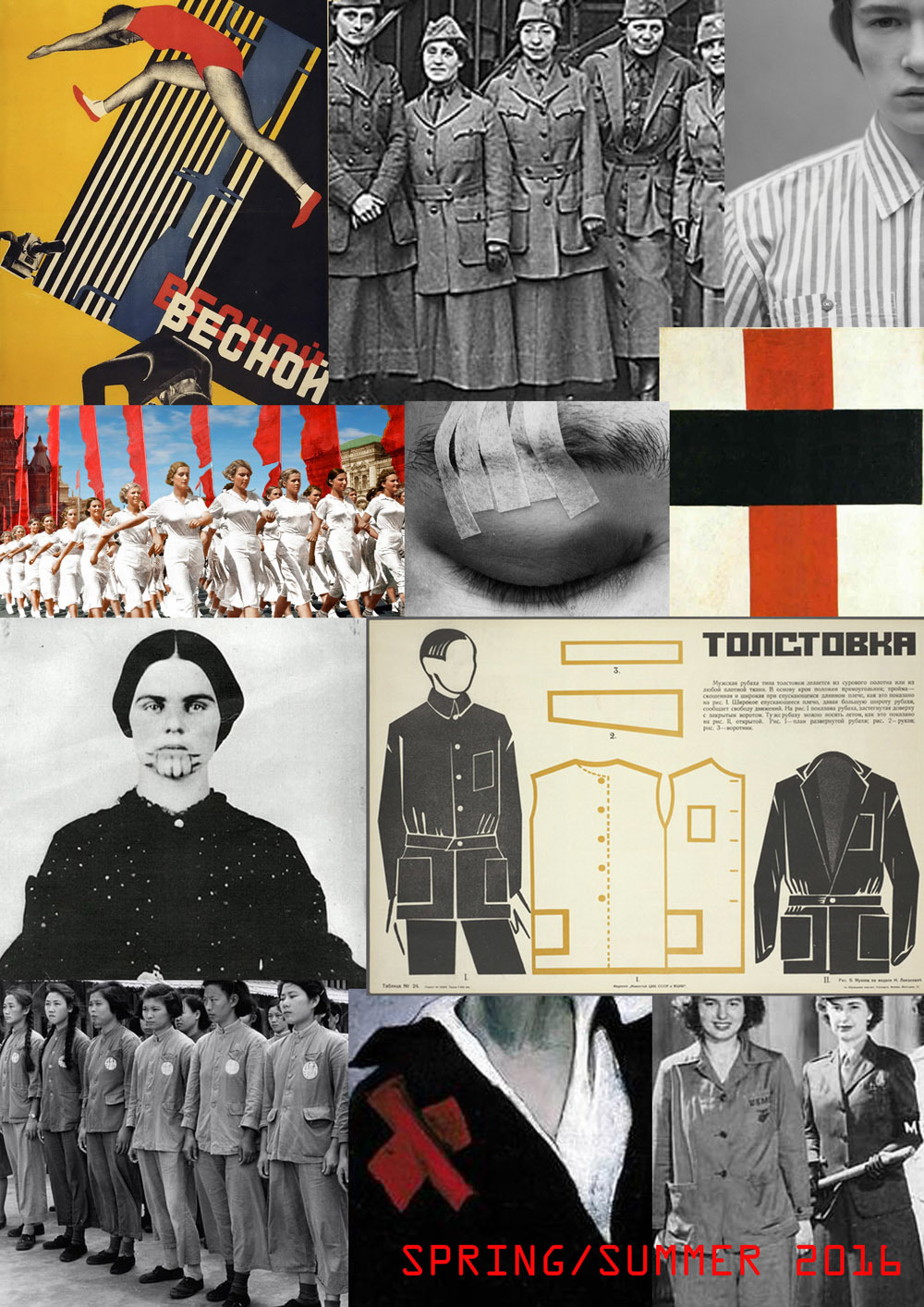
Credits
Text Lisa Riehl
Photography Michaël Smits
Production and styling Erik Raynal
Haare and Make-up Marianna Serwa
Model Petra @ Elite Prague
Video Fritz Marlon Schiffers
Styling Erik Raynal
Models Benjamin, Adam and Hannes @ Tomorrow Is Another Day
